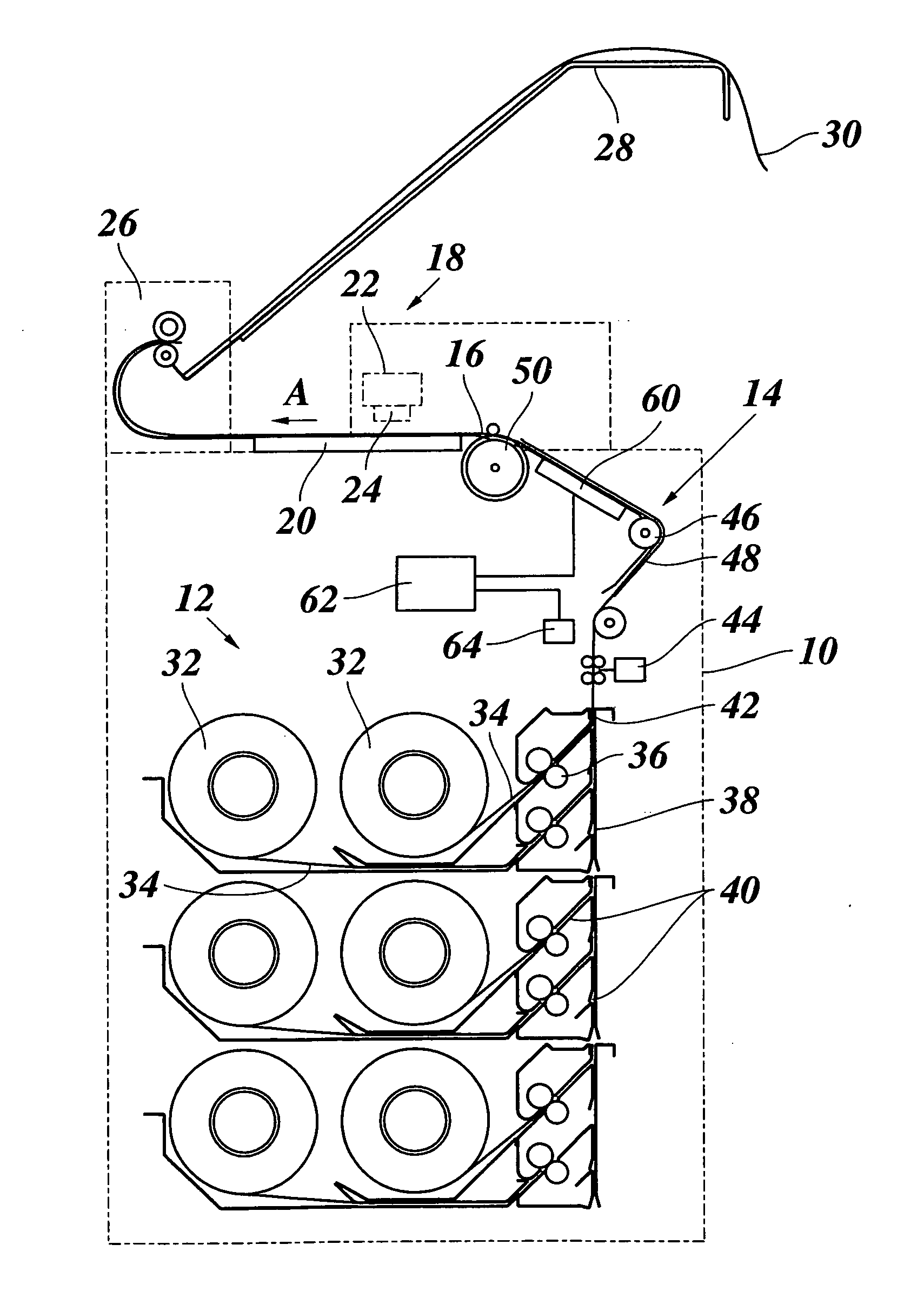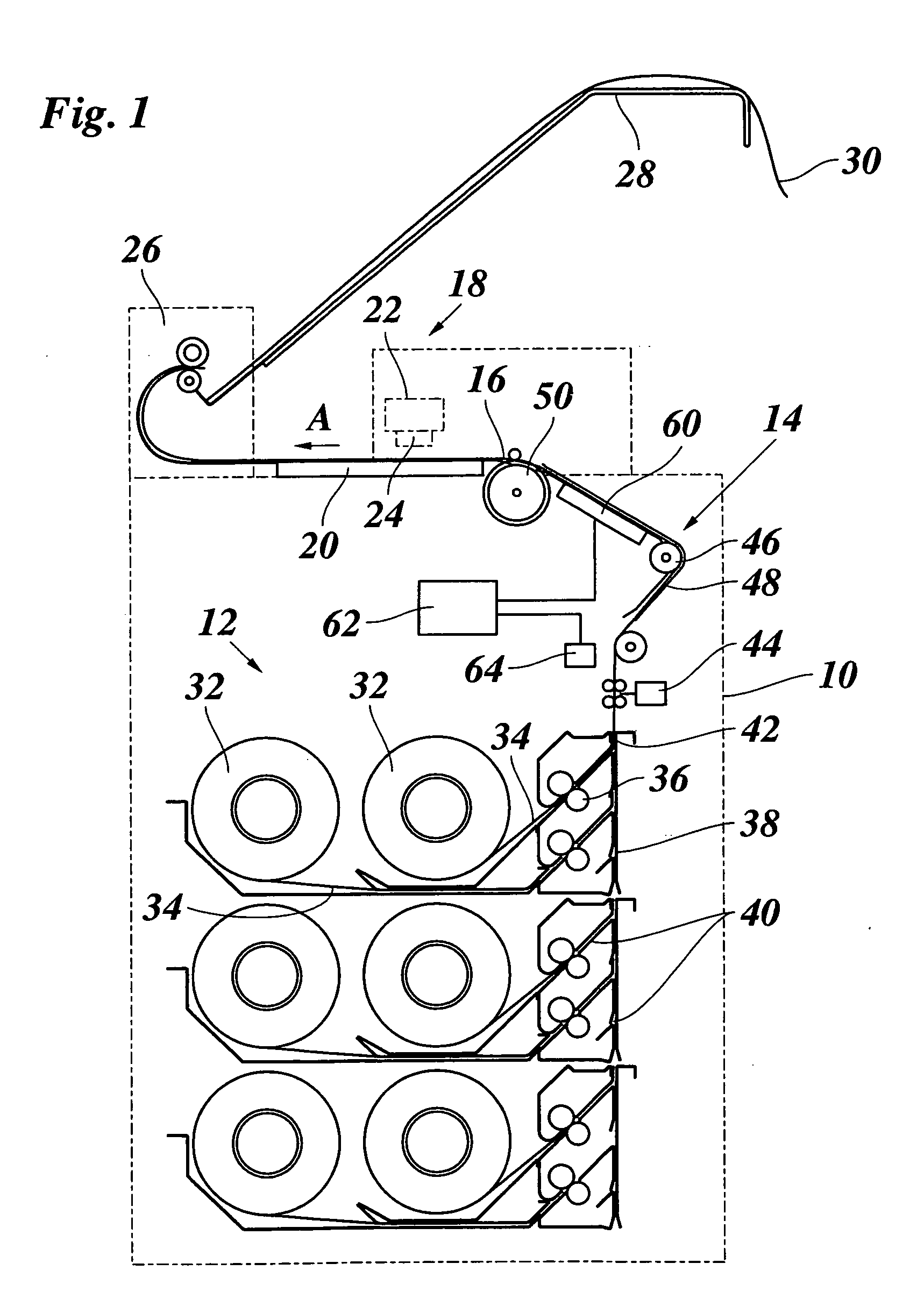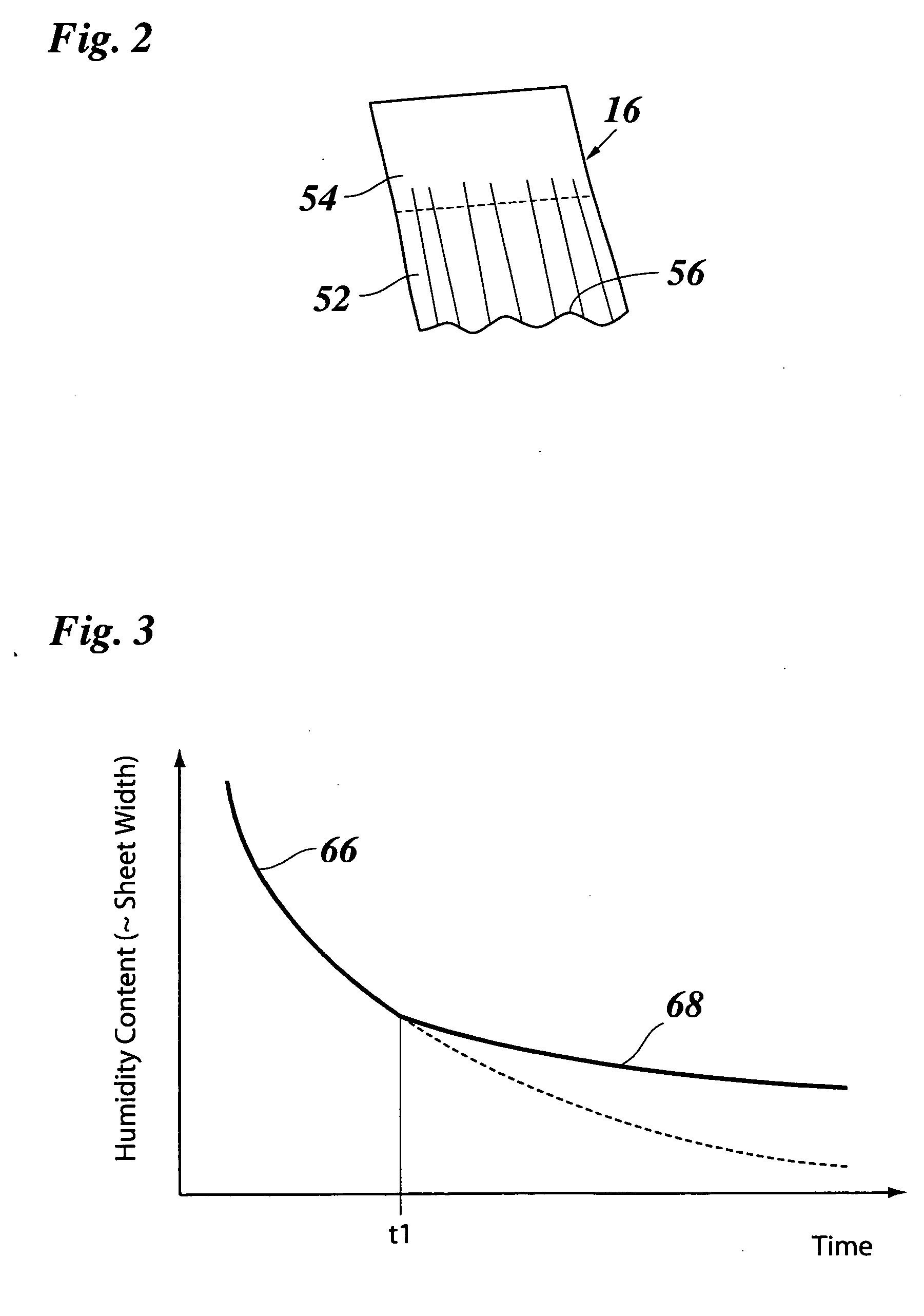Method of treating image receiving sheets and a hot melt ink jet printer employing this method
a hot melt ink jet printer and receiving sheet technology, applied in printing, other printing apparatus, etc., can solve the problems of affecting the solidification of ink, increasing the flattening of the ink, and steep humidity gradient, and achieve the effect of suppressing the cockling phenomenon
- Summary
- Abstract
- Description
- Claims
- Application Information
AI Technical Summary
Benefits of technology
Problems solved by technology
Method used
Image
Examples
Embodiment Construction
[0019] As is shown in FIG. 1, a hot melt ink jet printer comprises a frame 10 (which has only been shown in phantom lines) and which accommodates a paper magazine 12 and a paper feed system 14 adapted to feed a sheet 16 of paper to a print station 18 on the top side of the frame 10. In the print station 18, the sheet 16 is sucked against a flat top surface (print surface) of a perforated sheet support plate 20 by means of a vacuum system (not shown). A carriage 22 is arranged to travel back and forth across the sheet 16 in the direction normal to the plane of the drawing in FIG. 1 and carries at its bottom side a number of hot melt ink jet printheads 24 facing the sheet 16. Thus, by energizing the printheads 24, a swath of an image is printed in each pass of the carriage 22. Then, the sheet 16 is advanced by a step of appropriate length in a direction indicated by an arrow A, so that the next swath can be printed. A discharge mechanism 26 discharges the sheet onto a tray 28 which, i...
PUM
 Login to View More
Login to View More Abstract
Description
Claims
Application Information
 Login to View More
Login to View More - R&D
- Intellectual Property
- Life Sciences
- Materials
- Tech Scout
- Unparalleled Data Quality
- Higher Quality Content
- 60% Fewer Hallucinations
Browse by: Latest US Patents, China's latest patents, Technical Efficacy Thesaurus, Application Domain, Technology Topic, Popular Technical Reports.
© 2025 PatSnap. All rights reserved.Legal|Privacy policy|Modern Slavery Act Transparency Statement|Sitemap|About US| Contact US: help@patsnap.com



